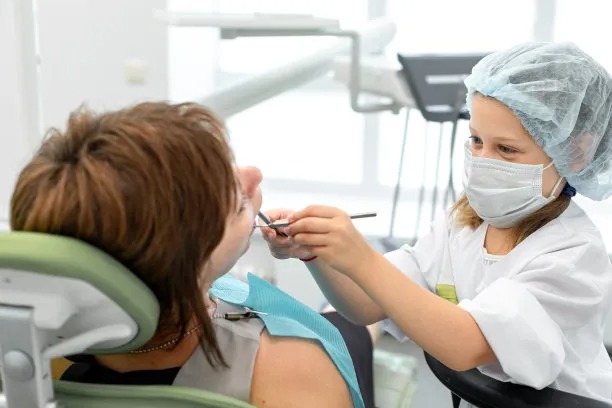A Gentle Guide to Extracting a Tooth Safely and Comfortably for Optimal Dental Health
Summary: Extracting a tooth can be a daunting experience for many individuals, but with the right approach, it can be performed safely and comfortably. This article provides a comprehensive guide that covers four main aspects essential to tooth extraction: understanding when extraction is necessary, preparing for the procedure, the extraction process itself, and post-extraction care. By adhering to these guidelines, patients can ensure optimal dental health while minimizing discomfort and anxiety associated with the procedure. Ultimately, this gentle guide aims to equip readers with the knowledge they need to navigate tooth extraction with confidence and ease.
1. Understanding When Tooth Extraction Is Necessary

Tooth extraction may become necessary for various reasons, primarily related to dental health. One common indication for extraction is severe tooth decay, which can lead to an infection if left untreated. When a tooth is extensively damaged, its repair may no longer be feasible, making extraction the best option to preserve surrounding oral structures.
Another reason for extraction is periodontal disease, which can result in loose teeth due to the deterioration of supporting tissues. In such cases, removing the affected tooth can help maintain the overall health of the mouth, preventing further complications.
Additionally, overcrowding of teeth is a frequent reason for tooth extraction, particularly before orthodontic treatments. In order to create space and facilitate proper alignment, dentists may recommend the removal of specific teeth, ensuring a healthier and more aesthetically pleasing smile.
2. Preparing for the Tooth Extraction Procedure
Preparation for a tooth extraction begins with a thorough dental assessment. A healthcare professional will conduct an examination to evaluate the condition of the tooth and gather necessary medical history. This step is crucial, as it enables the dentist to identify any special considerations, such as allergies or pre-existing conditions, that may impact the extraction process.
Patients should also be clear about their sedation options. Depending on personal comfort levels, individuals can choose local anesthesia, sedation, or even general anesthesia for their procedure. Discussing these options with the dentist will help tailor the experience to the patient’s specific needs and anxieties.
Finally, it’s essential to adhere to any pre-operative instructions provided by the dental clinic. This may include dietary restrictions or guidelines on medication use, which can significantly influence the safety and success of the extraction.
3. The Tooth Extraction Process Explained
The actual extraction process begins with the administration of anesthesia to ensure the patient remains comfortable throughout the procedure. Once numbness has been achieved, the dentist carefully loosens the tooth from its socket using specialized instruments. The level of difficulty and techniques used may vary depending on whether the tooth is fully erupted or impacted.
In the case of an impacted tooth, it may require additional steps, such as sectioning the tooth before removal. This technique reduces trauma to the surrounding tissues, promoting a smoother extraction process. The dentist will work meticulously to minimize discomfort and expedite recovery.
After the tooth is successfully extracted, the dentist will provide guidelines on how to manage any bleeding and ensure the site remains clean. Proper techniques at this stage are essential for healing and reducing the risk of complications.
4. Post-Extraction Care for Optimal Recovery
Post-extraction care plays a vital role in ensuring proper healing and minimizing discomfort. Immediately after the procedure, it is crucial to follow the dentist’s instructions regarding bite control on gauze to stop excessive bleeding. Keeping the extraction site undisturbed is imperative for appropriate clot formation.
Patients should also manage pain through prescribed medications or over-the-counter analgesics, as recommended. Ice packs can be utilized intermittently to reduce swelling during the first 24 hours. Adequate rest and hydration are equally important to aid recovery effectively.
Finally, adhering to dietary modifications is encouraged to facilitate healing. Soft foods are recommended for at least a few days, while avoiding high-acidic or hard-to-chew items. Following up with the dental clinic for any review appointments ensures the extraction site is healing correctly, and any concerns can be addressed promptly.
Summary:
The importance of understanding when a tooth extraction is necessary cannot be overstated. Equally, preparing adequately, approaching the procedure calmly and knowledgeably, and following post-extraction care recommendations are vital for optimal recovery and continued dental health.
This article is compiled by Vickong Dental and the content is for reference only.


